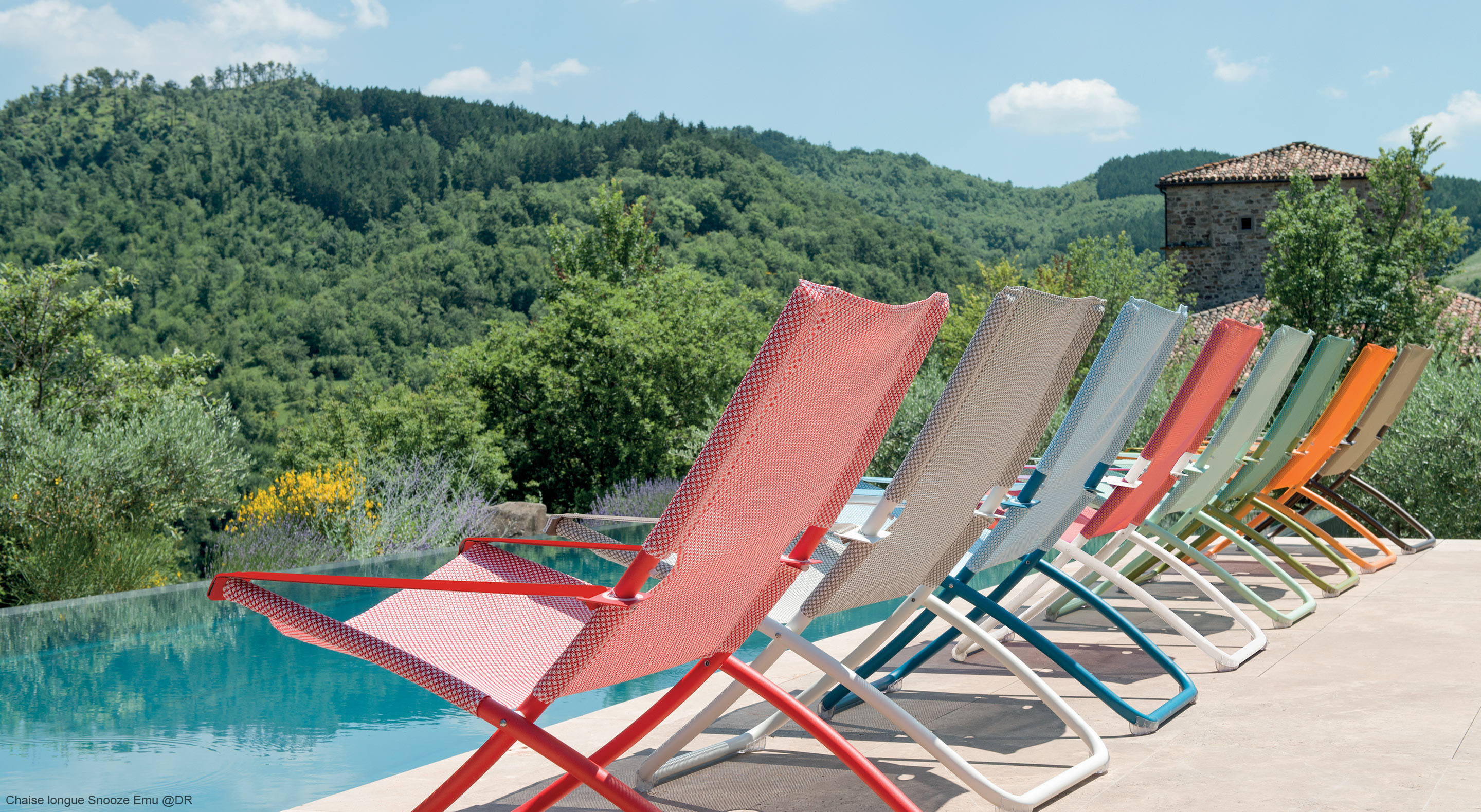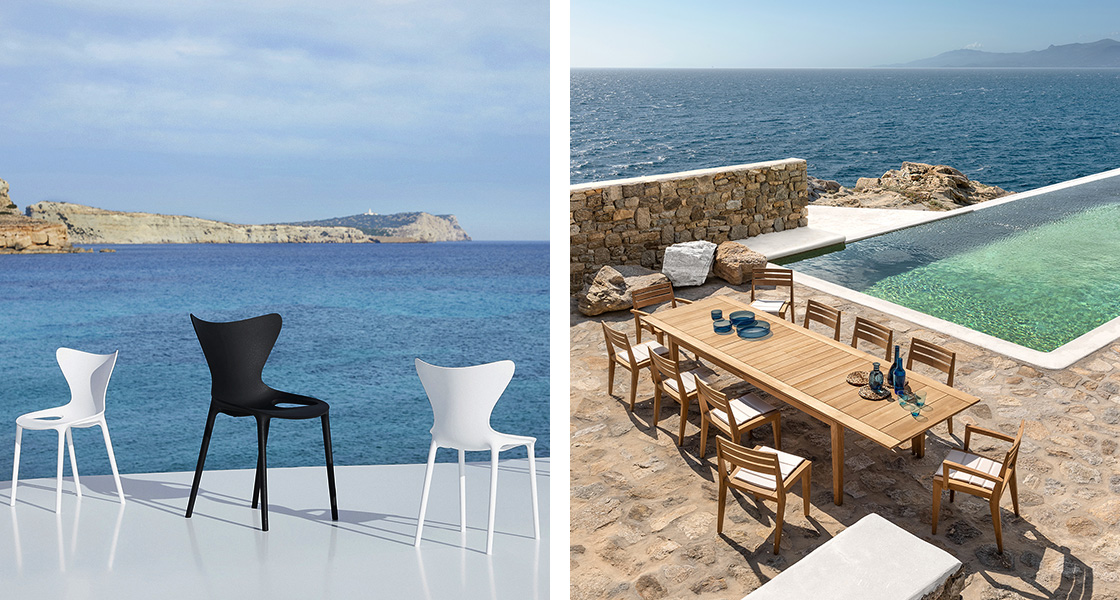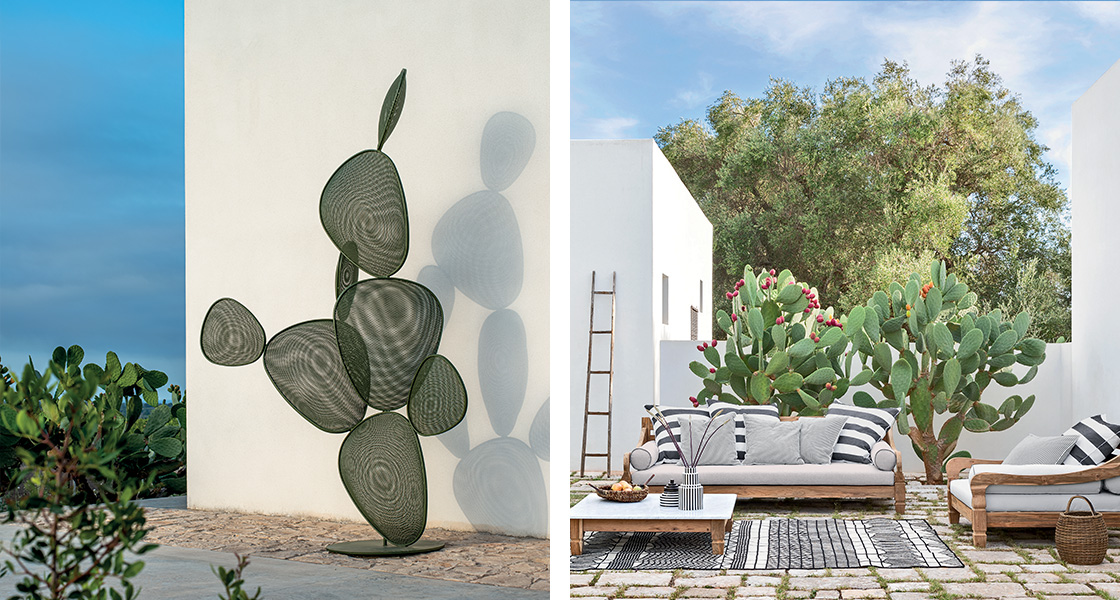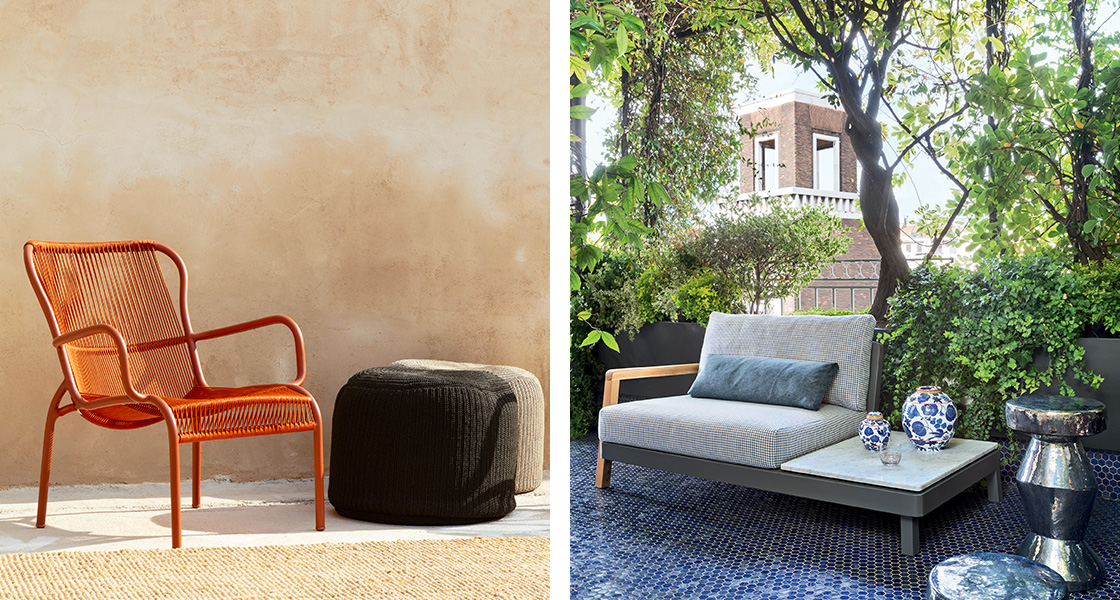Outdoor living’s in!
Published on 24 July 2020

During the Covid crisis, searches for garden-inspired keywords, such as “garden chair” and “garden seat”, increased exponentially. Having already become “an extra room” over the course of the past few years, outdoor spaces have now become the one thing absolutely everyone is desperate to have. Whether you simply have a windowsill, balcony or terrace or are blessed with your very own courtyard or garden, there are an ever-increasing number of ways to make use of each outdoor area, reflecting your tastes and lifestyle.
What belongs inside? Or out? The question has long since become redundant when designing an alfresco space. Today, it’s practically impossible to tell at a glance whether certain chairs, tables or sofas are intended for indoor or outdoor use. The only way of truly knowing is to scrutinise the traditional or innovative materials that have gone into their construction, equipping them to withstand all kinds of weather. Having spent well over half a century adorning our interiors, the fifty-something Saparella sofa from Michel Ducaroy for Cinna can finally get some fresh air thanks to its newly adapted upholstery and water-repellent inner liner combined with a shape that shakes off water with ease. Migrating outside for the summer months is by no means a one-way street, and there’s no reason whatsoever why certain outdoor pieces should not be moved indoors to be enjoyed when winter bites. The accessories and furnishings manufactured in China by Asian brand Kun Design are intrinsically designed to meet the stringent demands of outdoor living, but would certainly not look out of place in any modern interior.

Other well-established brands have also successfully managed to adapt their outdoor pieces for indoor use, or vice-versa, simply by adjusting their techniques, ensuring the initial concept remains uncompromised. Belgian firm Vincent Sheppard, for example, sets the standard in Lloyd Loom furnishings, a process that involves twisting kraft paper around a metal wire and then weaving it into furniture. Creativity is firmly embedded in the firm’s DNA, and today it continues to produce handcrafted pieces whilst simultaneously developing furniture that relies on other techniques and materials, such as rattan, wood, aluminium and HDPE wicker. The Kodo collection from Studio Segers is inspired by the versatile possibilities of mingling various different materials into thoroughly unique designs, with natural ceramics, industrial aluminium and acrylic rope all taking lead roles. At Gervasoni, meanwhile, the iconic Ghost sofa and InOut chairs have now ventured out into the garden, with the Italian brand once again having fun highlighting the fluidity between the home’s internal and external spaces.

When they’re not busy exploring new environments, the outdoor sector’s pure players are working hard to meet our latest needs. They’re upping the comfort ante to accommodate our longing to lounge or entertain, incorporating more lighting so we can illuminate our parties and evening meals, making things more lightweight and manoeuvrable so we can make the most of the tiniest alfresco space whenever the mood strikes. Fermob’s iconic Luxembourg chair, an inspired and jovial take on the chairs it produces for Paris’s public parks and gardens, has helped cement the firm’s urban identity. It has to be said that the French firm has a real talent for producing lightweight and versatile pieces that are perfectly suited to inner-city balconies and compact urban apartments, from the folding Bistro chair, which has been around for over a hundred years, to the small modular Bebop tables. But that hasn’t prevented its creations from popping up in a whole host of other locations, including a New York square, a private terrace in Seoul and the gardens of a Tuscan villa. By naming its products “Love”, “Ibiza” and “Pixel”, Spanish brand Vondom unashamedly brandishes its underlying philosophy of being cool and technological, a feat it achieves by working with some of the world’s most rebellious or mischievous designers such as Eugeni Quitllet, Fabio Novembre, Ross Lovegrove, Karim Rashid, Javier Mariscal and Ora-Ïto. The firm also has a true environmental conscience that reflects its decidedly modern and Mediterranean outlook, with certain designs even being produced using recycled plastic or fishing nets from the Balearic sea.

Italian brand Ethimo, meanwhile, truly has it all, from Luca Nichetto’s round bistro-style table that goes by the name of Concreto and is the perfect choice for balconies, to Marc Sadler’s large extendable table for roomy terraces designed for the Ribot collection, alongside a plethora of armchairs, seats and high and low stools. Patrick Norguet has recently designed a club armchair for the brand’s Swing collection. Then there’s the light and elegant Ping-Pong table, part of the Play collection, which allows you to dine with guests before digesting with a swift post-meal table tennis match. Bats, balls and nets are all included, of course.
From planters, lighting and window boxes to flower pots and even outdoor rugs... over the past few years, a highly extensive range of practical, decorative, unique and even sculptural pieces have flooded the outdoor design market. This year, Italian brand Emu has launched the Carousel collection, a successful collaboration with designer Sebastian Herkner featuring a small armed dining chair and lounge chair. It has also unveiled the Rio R50 from designers Anton Cristell and Emanuel Gargano, a tribute to its flagship design Rio, which has sold over 8 million units and celebrates its 50th birthday this year. Another design the brand has cultivated this year is Chiaramonte-Marin’s Ficus, a fully modular cactus-style metallic sculpture to which an “illuminating leaf” can be added. The future is unquestionably bright for the world of outdoor living.
By Marie Montuir